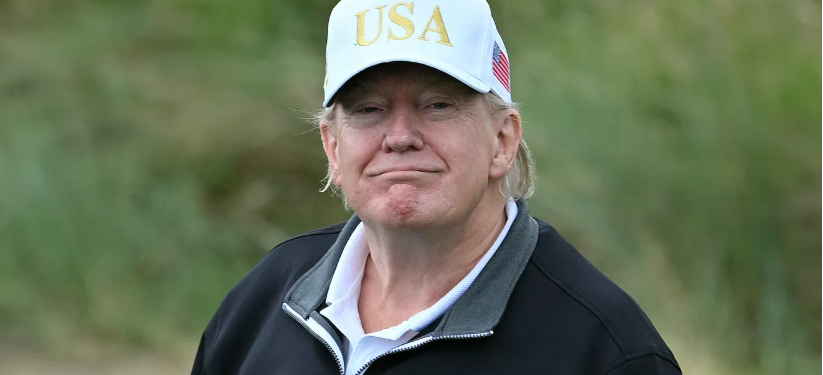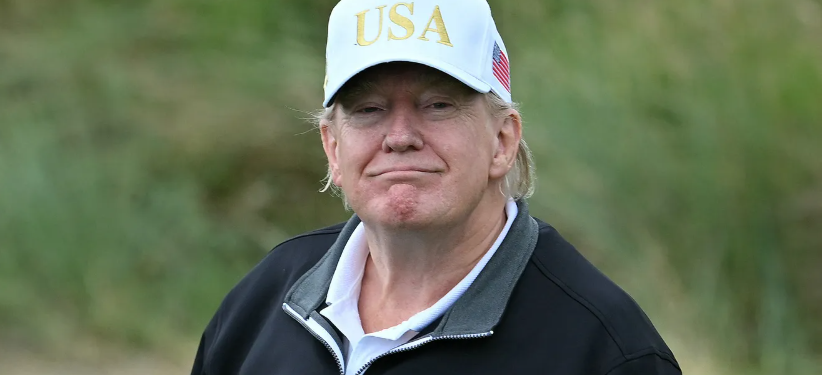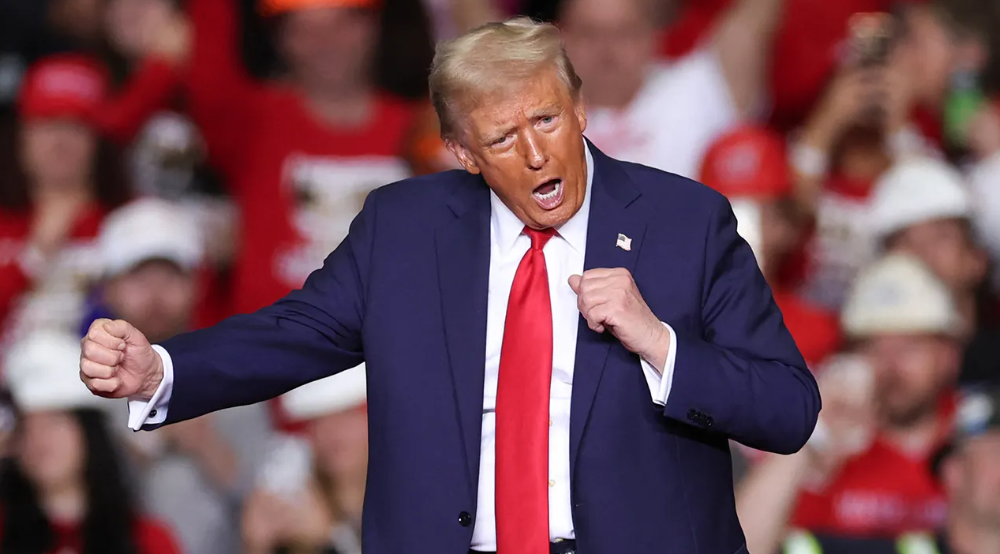Washington, Sept. 5 — President Donald Trump will today sign an executive order to rename the Department of Defense as the Department of War, restoring a title that was abandoned more than seven decades ago. The original Department of War, established in 1789, oversaw America’s military forces until 1947, when post–World War II restructuring created the modern Department of Defense.
A senior White House official confirmed the move, saying the decision is meant to highlight what the administration views as a return to traditional military values and a focus on combat readiness. Defense Secretary Pete Hegseth has repeatedly spoken about the need to revive the “warrior ethos” across the armed forces, arguing that the term “defense” suggests passivity rather than strength.
Trump himself signaled the change during an August 25 conversation with reporters. “It used to be called the Department of War, and it had a stronger sound,” he said. “And as you know, we won World War I, we won World War II. We won everything.”
The name change is largely symbolic, as the department’s structure and responsibilities will remain the same. However, supporters argue it reflects a clearer recognition of America’s role in global conflicts, while critics may see it as needlessly provocative in a time of complex international relations.
By reviving a historic name, the Trump administration hopes to send a message about projecting strength, patriotism, and military pride—values it believes should define America’s armed forces in the years ahead.
THE MAN WHO NEED TO IMPROVE AMERICAN PEOPLE AND ALSO HIS OWN GROWTH

Trump Revives “Department of War” as Secondary Name for Defense Department
Washington, Sept. 5 — President Donald Trump is preparing to sign an executive order that will officially revive the historic name Department of War as a secondary title for the Department of Defense. The move, which has been under quiet discussion for months, reflects the administration’s desire to restore what it calls the “warrior ethos” at the heart of America’s armed forces.
A White House summary of the order, obtained by USA TODAY, outlines that the Defense Secretary will now have the option to use traditional wartime titles in selected settings. That means phrases like “Secretary of War,” “Department of War,” and “Deputy Secretary of War” may appear in official correspondence, public communications, ceremonial occasions, and non-statutory executive documents. The department’s legal framework, structure, and funding mechanisms remain unchanged, but the symbolic shift is unmistakable.
A Name with History


The title Department of War dates back to the founding days of the United States. Established in 1789, the War Department oversaw the Army and much of the early military apparatus. It carried the name through the nation’s formative years, the Civil War, and both World Wars. In 1947, following World War II, Congress reorganized the military establishment through the National Security Act. That legislation replaced the Department of War with the newly created Department of Defense, a title that emphasized a broader mission of protecting the homeland, coordinating multiple military branches, and managing America’s emerging role in the Cold War.
By reviving the old name, even as a secondary title, the Trump administration is deliberately drawing on that history. Trump himself previewed the idea in late August during a conversation with reporters. “It used to be called the Department of War, and it had a stronger sound,” he said. “And as you know, we won World War I, we won World War II. We won everything.”
The Warrior Ethos
Defense Secretary Pete Hegseth has been one of the strongest voices behind the change. A former Army officer and combat veteran, Hegseth has long argued that the word “defense” suggests a passive stance, while “war” better conveys readiness, strength, and America’s willingness to confront adversaries head-on.
In public remarks, Hegseth has tied the order to what he calls a broader cultural shift within the military. “We need to remind ourselves and the world that America’s armed forces are not just a shield but a sword,” he said recently. “We are warriors, not simply defenders. Restoring this title honors our history and clarifies our mission.”
Supporters inside the administration say the shift is largely symbolic but deeply important. They argue that military culture thrives on tradition, ritual, and language that conveys purpose. For Trump allies, Department of War resonates as a no-nonsense description of what the military ultimately does.
A Divisive Symbol
But not everyone agrees. Critics, including some retired generals and historians, warn that reviving the old name risks sending the wrong message both at home and abroad.
“Words matter, especially when it comes to the U.S. military,” said Dr. Eleanor Marshall, a military historian at Georgetown University. “The Department of Defense was created deliberately to signal a shift away from war as the central organizing principle of American foreign policy. Calling it the Department of War again, even symbolically, suggests a more aggressive posture that could alarm allies and adversaries alike.”
Others note that the world of 2025 is far different from the immediate postwar years of the 1940s. Today’s challenges include cyber threats, terrorism, space security, and non-traditional warfare. They argue that the word “defense” captures the complexity of protecting the nation better than the stark language of “war.”
Politics and Perception
The timing of the move is also politically charged. Trump has consistently sought to cast himself as a president who strengthens the military, embraces patriotic symbolism, and rejects what he sees as weak or overly cautious approaches by previous administrations.
The order may resonate with Trump’s political base, particularly veterans and supporters who view military strength as central to American identity. For them, restoring the old name is not just nostalgia but a statement of pride.
Yet for others, the change will be seen as unnecessary and even provocative. Foreign governments may interpret it as a signal of greater U.S. militarism, while domestic critics may frame it as political theater rather than meaningful policy.
What Changes in Practice?
Legally, very little. The Department of Defense will remain the statutory name under U.S. law, and Congress would have to pass legislation to make any permanent change. The executive order only authorizes the use of Department of War and associated titles in non-binding contexts—ceremonies, speeches, internal documents, and symbolic references.
Still, symbolism has power. Military branches thrive on tradition, and words on letterhead, flags, or speeches can shape morale. The order also leaves room for flexibility, allowing officials to use either name depending on the situation. For instance, at a military parade or memorial ceremony, “Department of War” might be used to evoke history and heritage. At NATO meetings or in defense budget hearings, “Department of Defense” will likely remain the preferred term.
A Historic Echo
Historians note that this is not the first time American leaders have reconsidered the language of war and defense. In the late 1940s, there was significant debate about what to call the reorganized military department. “War” was seen as too narrow and perhaps too blunt for an era when nuclear deterrence and Cold War strategy required a different kind of messaging.
By choosing “defense,” lawmakers hoped to emphasize that America was not seeking endless war but rather stability and protection in a dangerous world. That choice has shaped generations of military identity.
Trump’s decision, therefore, is more than a matter of words—it is an ideological statement about how his administration sees America’s role.
Looking Ahead
Whether the name Department of War sticks beyond Trump’s presidency remains to be seen. Future administrations could quietly shelve the term or embrace it depending on political winds. But for now, the executive order ensures that one of America’s oldest titles is back in use, at least in certain contexts.
For Trump and Hegseth, the move is about restoring strength, clarity, and tradition. For critics, it is a troubling reminder that language can signal intent, and intent shapes policy.
As the pen is lifted today to sign the order, the debate over words and war will continue—echoing across the Pentagon’s halls, the corridors of Congress, and capitals around the world.
